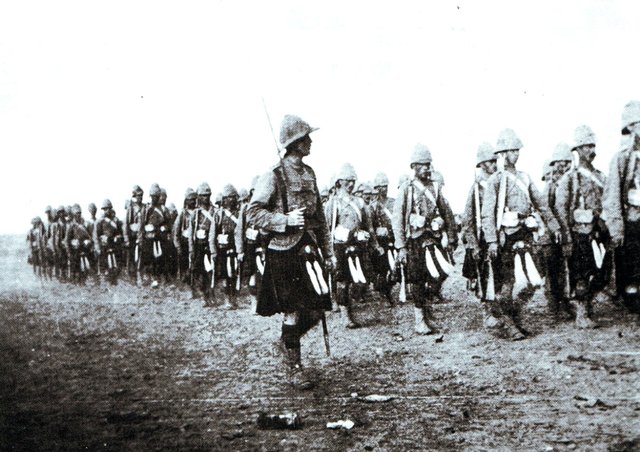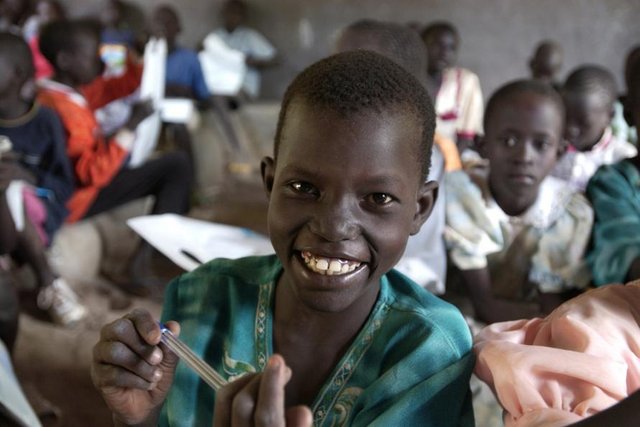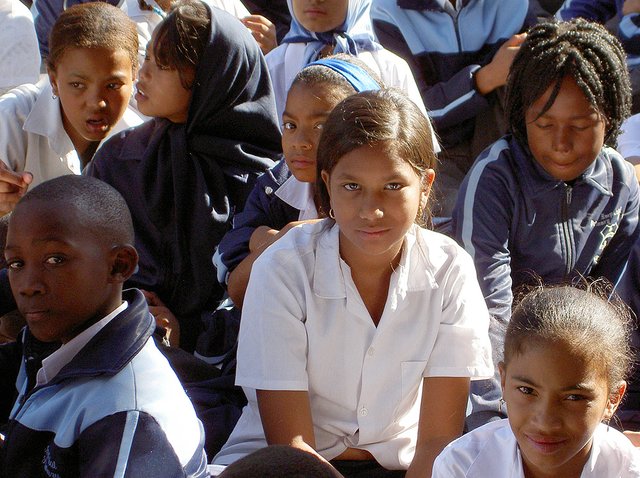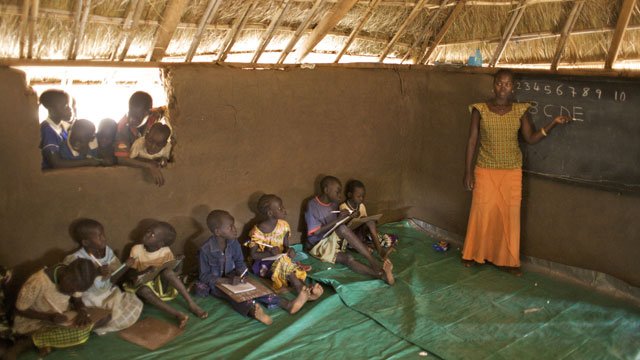Historical Essay: Khalawi to Kuttab: Changing of Traditional Education to a new Model Elementary School in Sudan
Abstract

Source
This article will discuss the educational elementary system of Sudan in the colonial period. This is specifically to examine the changing of Khalawi to Kuttab system and how it unified. It is notable that Khalawi already existed prior to the coming of British and Egyptians in Sudan. This paper will answer the following questions: (1) What is Khalawi and Kuttab? (2) What are the reasons why Khalawi system was changed to Kuttab? (3) How did it affect to the multiethnicity of the people both in North and South Sudan? (4) Why did it end up to the unification of the two educational systems? The main problem that this paper intended to study is that Southern Sudan due to it’s multiethnicity was claimed as primitive and backward compared to Northern Sudan. This paper therefore tries to examine the role of the Ministry of education in Sudan towards uplifting the socio-political and economic status of Southern Sudan. The unit of analysis in this paper comes from internet sources, journals, and books available. The Khalawi system includes Arabic literature's as well as arithmetic while the Kuttab system was the new model of elementary education. Thus, this paper looks at how this two systems fused and implemented both in North and South Sudan amidst of it’s multiethnicity.
Keywords: Sudan, British government, educational system, khalawi, kuttab,

Source
Introduction
This paper will discuss the nature of Khalawi and Kuttab educational system in Sudan. The significance of this study is that it will contribute to the ideas of how the British government transformed the educational system of Sudan.
In the first half of the 20th century, Sudan, which included the territories of present-day Sudan and South Sudan, was ruled by a dual colonial government known as the Anglo-Egyptian Condominium (1899-1956). Egypt at that time was basically subordinated to Britain politically and militarily from 1882 and 1956. In the colonial period, Sudan was also ruled as two Sudans when the British sought to separate the Islamic and Arab-speaking North from the multireligious and multilingual South.
This includes educational policy which until 1947, the British developed a government school system in the North while leaving educational matters in the hands of Christian missionaries in the South. In the last colonial decade (1947-1957), it witnessed a triple process of educational expansion, unification, and nationalization.

Source
They gave up the policy of the separation of North and South and had educational unification where they aligned the Southern Curricula and Northern programs wherein Arabic was introduced to the Southern schools as a subject matter and as a medium of instruction. Hence, after Sudan gained independence from Britain and Egypt in 1956, missionary and other private schools were nationalized a year after.
In order for us to further understand the nature of education in Sudan in it’s colonial time particularly the changing of Khalawi to Kuttab the researcher sought to answer the following questions: (1) What is Khalawi and Kuttab? (2) What are the reasons why Khalawi system was changed to Kuttab? (3) How did it affect to the multi-ethnicity of the people both in North and South Sudan? (4) Why did it end up to the unification of the two educational systems?
Results and Discussions
- Khalawi in 1800s of Sudan
The Italian Catholic and Prussian Protestant missions also established several schools in the main towns of Northern Sudan (Khartoum, El Obeid, Berber, Suakin). In the Mahdist period (1881–1898), missionary and state schools that were opened under the previous regime had to cease their activities. Khalāwī became once again the sole type of educational institution in Northern Sudan. By 1899, there may have been as many as 1,500 khalāwī providing literacy and Koranic learning for nearly 60,000 children.[1] Information on education in precolonial Southern Sudan is very scarce. An elementary school was set up in Equatoria in the 1870s, catering mainly to sons of Egyptian officers posted in the province. A very limited number of local children may have attended the school. Christian missionaries went up the White Nile in the 1850s and 1860s and established small stations (Gondokoro, Holy Cross, Kaka). Yet harsh climatic conditions and hostile attitudes of local populations prevented them from opening schools.

Source
Kuttab: New model of elementary education
A sudden desire of change came in when James Currie (1900-1914) became the director of education in Sudan. The following are his three primary aims: creating a competent artisan class, spreading education among the masses of the people in away that would enable them to understand the merest elements of the machinery of government particularly with reference to the equable and impartial administration of justice, and creating a “small native administrative class who [would] ultimately fill many minor government posts.[2]
The SG set up new educational institutions to achieve these goals. To be sure, traditional khalāwī did not disappear from Northern Sudan; some of them even obtained state subsidies provided they put stronger emphasis on “secular” subjects such as Arabic literacy and arithmetic.[3] The number of subsidized khalāwī grew from six in 1918 to 768 in 1930,[4] reflecting the broader policy of indirect rule that was being implemented in Sudan at the time. But the government created a new model of elementary school (kuttāb) that was supposed to replace the existing khalāwī in the longer run. From the 1930s onward, the Department of Education harnessed its limited financial resources for expanding the government school system.
- Elementary schools in Sudan
In the last colonial decade, the Sudanese educational field underwent deep transformations through a triple process of expansion, unification, and nationalization. By 1957, the great majority of schools had moved under the control of the Ministry of Education of the newly independent country.
- Unification of educational systems

[Source](https://abcnews.go.com/ABC_Univision/News/photos-elementary-school-world/story?id=19554303)
In 1947, the Government decided to administratively reunite North and South Sudan. Hence, unification of the Northern and Southern educational systems followed. The fact that education in the Southern Sudan had been left to missions accounted for the “backwardness” and the “primitive and inhuman condition” in which the “underfed” and ignorant Southern tribes still lived.[7]
In the years of 1946–1947 they discusses greater Sudanese participation in the government of the country and also advocated educational unification. The British and Northern Sudanese participants to the conference agreed that educational policies had to be homogenized and the Arabic language taught in Southern schools.[8] But educational unification actually happened after a year of independence where differences of the school system both in North and South Sudan were removed. To uplift the so-called backwardness and primitive and inhuman condition in the South, Northern Sudanese sought two measures: the spread of the Arabic language in the South and the establishment of schools along the Northern model.[9]
Conclusion
Since Khalwa or Khalawi already developed during the Islamization of the region from 13th and 14th centuries, network of Koranic schools came in Sudanese Arabic in the Northern part of Sudan. Subject matters included Arabic reading and writing, simple arithmetic, the Quran, Koranic exegesis, and Islamic jurisprudence.
But when the British colonized Sudan, the government created a new model of elementary school which was Kuttab that was supposed to replace the existing khalāwī in the longer run. After Sudan gained independence, the two educational system was then merged in elementary education.
Despite of the multiethnicity and it’s being primitive and backward especially in Southern Sudan, the Government particularly through the efforts of the Ministry of Education established the triple process of expansion, unification, and nationalization This transformation was achieved in the last colonial decade. By 1957, the great majority of schools had moved under the control of the Ministry of Education of the newly independent country.
Thus, the changing and unifying of both educational system was successful in improving it’s elementary education and also gave advancement to the social, political, and economic aspects particularly in the Southern Sudan.
References
Books
Abu Bakr, Yusuf El Kh. “Language and Education in the Southern Sudan.” In Directions in Sudanese Linguistics and Folklore. Edited by Sayyid H. Hurreiz and Herman Bell, 13–18. Khartoum: Khartoum University Press, 1975.
Sanderson and Sanderson, Education, Religion and Politics in Southern Sudan 1899-1964 (London:Ithaca Press, 359.
Mohammed K. Osman, “The Rise and Decline of the People’s (Ahlia) Education in the Northern Sudan (1927–1957),” Paedagogica Historica 19.2 (1979): 356.
- K. Winter, “Education in the Sudan,” in The Anglo-Egyptian Sudan from Within, ed. John Almeric de Courcy Hamilton (London: Faber & Faber, 1935), 346.
Article
Iris Seri-Hersch. Education in Colonial Sudan, 1900-1957. Oxford Research (African History)
http://africanhistory.oxfordre.com/view/10.1093/acrefore/9780190277734.001.00 01/acrefore-9780190277734-e-12
Journal
Province Education Officers Handbook, Appendix 2, 193[?], CIVSEC 1/17/1/1, National Records Office, Khartoum, Sudan.
[1] Mohammed K. Osman, “The Rise and Decline of the People’s (Ahlia) Education in the Northern Sudan (1927–1957),” Paedagogica Historica 19.2 (1979): 356.
[2] Gordon Memorial College Annual Report and Accounts, 1901, 9, quoted in Beshir, Educational Development, 29.
[3] Beshir, Educational Development, 30.
[4] Ibid., 60
[5] Province Education Officers Handbook, Appendix 2, 193[?], CIVSEC 1/17/1/1, National Records Office, Khartoum, Sudan.
[6] R. K. Winter, “Education in the Sudan,” in The Anglo-Egyptian Sudan from Within, ed. John Almeric de Courcy Hamilton (London: Faber & Faber, 1935), 346.
[7] Abd al-Rahim, Imperialism and Nationalism, 128.
[8] Ministry of Education, Proposals for the Expansion and Improvement of the Educational System in the Southern Provinces, 3.
[9] Sanderson and Sanderson, Education, Religion and Politics, 359.
Posted from my blog with SteemPress : http://zam398.vornix.blog/2018/11/13/historical-essay-khalawi-to-kuttab-changing-of-traditional-education-to-a-new-model-elementary-school-in-sudan/